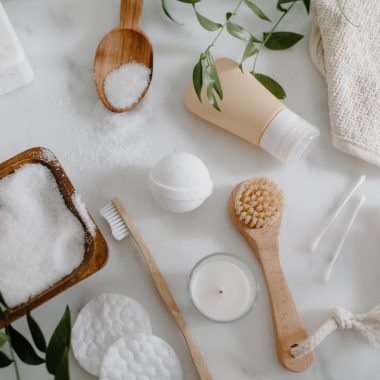How to Understand Your Skin Type: A Comprehensive Guide
Understanding your skin type is crucial when it comes to achieving healthy and glowing skin. It allows you to choose the right products and treatments that cater to your skin’s unique needs.
However, determining your skin type can be tricky, especially if you don’t know what to look for. In this article, we will provide you with tips on how to understand what type of skin you have and how to take care of all skin types.
Understanding Skin Types
Before we dive into the specifics of how to determine your skin type, it’s essential to understand the four main skin types:
- Normal Skin:
Normal skin has a balanced level of sebum and is neither too oily nor too dry. It has a smooth texture, no visible pores, and a radiant appearance. - Dry Skin:
Dry skin produces less sebum, which can result in flakiness, tightness, and roughness. It may have a dull and lackluster appearance. - Oily Skin:
Oily skin produces more sebum, which can result in a shiny appearance, enlarged pores, and acne. - Combination Skin:
Combination skin is a mix of oily and dry skin, with some areas producing more sebum than others.
How to Determine Your Skin Type
- The Bare-Faced Method:
Wash your face with a gentle cleanser and pat it dry. Wait for an hour without applying any skincare products or makeup. After an hour, check your skin. If your skin feels tight and dry, you may have dry skin. If it feels oily, you may have oily skin. If your skin feels comfortable and not too oily or dry, you may have normal skin. If some areas of your skin feel oily, while others feel dry, you may have combination skin. - The Blotting Sheet Method:
Press a blotting sheet on different areas of your face, such as your forehead, nose, chin, and cheeks. If the blotting sheet picks up a lot of oil, you may have oily skin. If it picks up minimal oil, you may have dry skin. If it picks up some oil in the T-zone (forehead, nose, and chin), you may have combination skin. If the blotting sheet doesn’t pick up any oil, you may have normal skin. - The Pore Size Method:
Look at the pores on your face. If they are visible and enlarged, you may have oily skin. If they are barely visible, you may have dry skin. If they are visible in the T-zone but not on the cheeks, you may have combination skin. If they are hardly visible, you may have normal skin.
How to Take Care of All Skin Types
Once you have determined your skin type, it’s time to take care of it. Here are some tips on how to take care of each skin type:
- Normal Skin:
If you have normal skin, you’re lucky! Your skin requires minimal care. However, it’s still important to follow a skincare routine. Use a gentle cleanser, a moisturizer, and sunscreen daily. Avoid using harsh products that may disrupt your skin’s balance. - Dry Skin:
If you have dry skin, focus on hydrating your skin. Use a gentle cleanser and a moisturizer that contains hyaluronic acid, glycerin, or ceramides. These ingredients help lock in moisture and keep your skin hydrated. Use a facial oil to provide an extra layer of hydration. Avoid using heavy creams or greasy products that may clog your pores. - Oily Skin:
If you have oily skin, focus on controlling oil production. Use a gentle cleanser and a lightweight moisturizer that won’t clog your pores. Look for products that contain salicylic acid, which can help unclog pores and control oil production. Use a clay mask once a week to absorb excess oil. - Combination Skin:
If you have combination skin, focus on balancing oil production and hydration. Use a gentle cleanser, a lightweight moisturizer, and spot treat any oily areas with a salicylic acid or benzoyl peroxide product. Use a toner that contains alpha-hydroxy acids (AHAs) or beta-hydroxy acids (BHAs) to exfoliate dead skin cells and unclog pores.
Additional Tips for All Skin Types:
- Cleanse your skin twice a day to remove dirt, oil, and makeup from your skin.
- Exfoliate once or twice a week to remove dead skin cells, unclog pores, and improve skin texture.
- Moisturize daily to lock in moisture and keep your skin hydrated.
- Protect your skin from the sun’s harmful UV rays by using a broad-spectrum sunscreen with an SPF of 30 or higher every day, even on cloudy days.
- Stay hydrated by drinking at least eight glasses of water a day to keep your skin hydrated and healthy.
- Get enough sleep every night to give your skin time to repair and regenerate.
By using the methods mentioned above, you can determine your skin type at home and take care of it accordingly. Remember to follow a consistent skincare routine and incorporate healthy lifestyle habits to improve your skin’s overall health and appearance.





